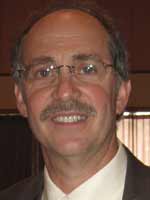More than 20 years after Chernobyl, US researchers have travelled to Sweden and Poland to gain insight into how radioactive elements spewed out by the reactor fire have undergone downward migration into the soil. Among the team’s findings was the fact that much more plutonium was found in the Swedish soil at a depth that corresponded with the nuclear explosion than that of Poland.
The Chernobyl nuclear power plant, situated in what is now Ukraine, exploded in 1986 releasing clouds of radioactive particles into the air across the former Soviet Union, Europe and even into the eastern seaboard of North America.

Professor Gerald Matisoff
Now, Gerald Matisoff, chair of the department of geological sciences at Case Western Reserve University, Lauren Vitko, field assistant and their colleagues travelled to Sweden and Poland to gain insight into the downward migration of Chernobyl-derived radionuclides in the soil. They took soil samples from various locations in these two countries, which were significantly affected by the fallout. They measured the presence and location of caesium (137Cs), plutonium (239, 240Pu), and lead (210Pbxs).
Radionuclides occur in soil both from natural processes and as fallout from nuclear testing. However, among the team’s findings, reported at the joint meeting of the Geological Society of America, Soil Science Society of America, American Society of Agronomy, Crop Science Society of America, and Gulf Coast Association of Geological Societies in Houston, Texas, on 6th October, was the fact that much more plutonium was found in the Swedish soil at a depth that corresponded with the nuclear explosion than in Poland.
By looking at the magnitude of the radioactive fallout, how fast it moved into the soil and how quickly it was eroded and transported by sediment, the researchers hope to shed light on two aspects of radioactive fallout.
First, their work will help explain the public health ramifications, how radionuclides enter the food chain, and how geological effects can influence exposure and cleanup. Secondly, the results will help in developing an understanding of the differentiation of radioactive elements from a one-time incident like Chernobyl and those of fallout created by atmospheric nuclear weapons testing conducted in the 1960s.
The team explains the difference between their findings in Sweden and Poland based on weather patterns from the time of the Chernobyl disaster. Apparently, it rained in Sweden while the radioactive cloud was over that country. This meant that leeched of much of its radionuclides, far less plutonium fell on Poland when the radioactive cloud later crossed over into that country.
Matisoff says that his team’s findings are preliminary, having raised as many questions as they have answered. His goal is to use this research for even bigger projects and greater, more definitive findings.
Further reading
Celebrating the International Year of Planet Earth, 2008 Joint Annual Meeting, October 5-9 2008, Houston, Texas, paper 50755
http://a-c-s.confex.com/crops/2008am/webprogram/Paper50755.html
Professor Gerald Matisoff homepage
http://geology.cwru.edu/~matisoff/
Suggested searches
radioactivity
caesium
plutonium
lead